Tom's Guide Verdict
Sports and serious shooters will find a lot to like in this mirrorless camera, but some of the features are overkill for casual photographers.
Pros
- +
Excellent image and video quality
- +
Tough construction
- +
Can shoot 11 fps for more than 30 seconds
Cons
- -
Awkward on-screen menus
- -
Some noise at higher ISO
- -
Expensive
Why you can trust Tom's Guide
The Sony A6500 is the premium model in Sony’s mirrorless camera lineup, packing every feature the company could think of into its small case. The camera has the same 24.2 megapixel image sensor as its predecessor, the a6300, but adds extra processing and buffer memory, plus some tweaks to the controls and menu. It also has 5-axis image stabilization, making it one of the best mirrorless cameras for shooting video.
Since the a6500 debuted, Sony has released a number of other compact mirrorless cameras. We've compiled this handy guide that compares the Sony a6500 vs the a6000, a6100, a6300, a6400, and a6600.
Design: Solid and compact
The a6500 shares the physical improvements of the a6300, including a magnesium-alloy body and more rigid construction. That's a big step forward. The a6500 feels much more solid than previous models (like the a6000), with a mottled plastic skin that feels very tough. It's not waterproof, though. Sony describes the a6300 as having dust and moisture resistance, but not water or dust proofing. The camera body alone weighs in at a moderate 1.1 pounds, with the 16-70mm f/4 kit Zeiss lens I tested it with adding another 12 ounces.
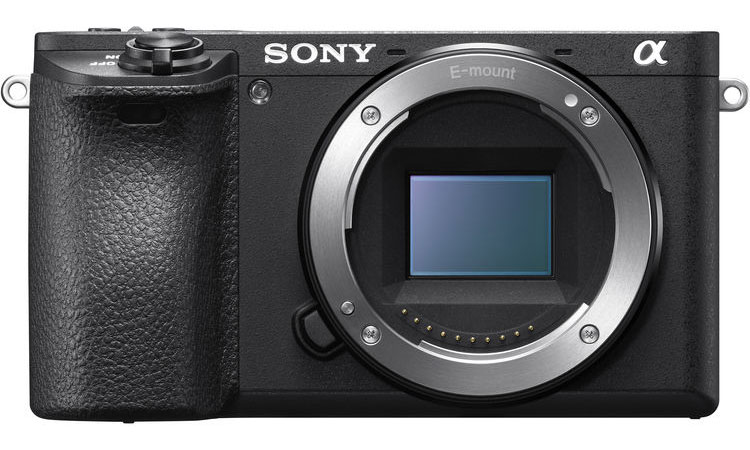
A small camera, the a6500 measures just 4.7 inches wide and 2.75 inches deep on the grip. It's comfortable to hold, but the relatively large weight of the lens makes the camera unbalanced; it felt awkward to shoot with it one-handed.
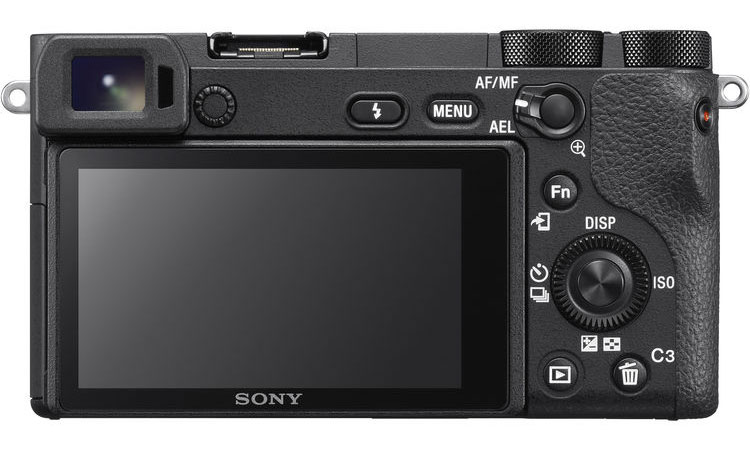
On the back of the camera body is the large, foldout LCD screen. This 3-inch, 921K-pixel display folds both up and out, so you can tilt it flat for viewing from above and to about 30 degrees off-flat for viewing from below. It's a clean, bright screen with excellent detail, so it works well in both situations. The touch screen allows you to access most of the controls with the tap of a finger. It also has options to refresh the screen at 60 or 120 frames per second, which helps keep the screen sharper if you pan the camera.
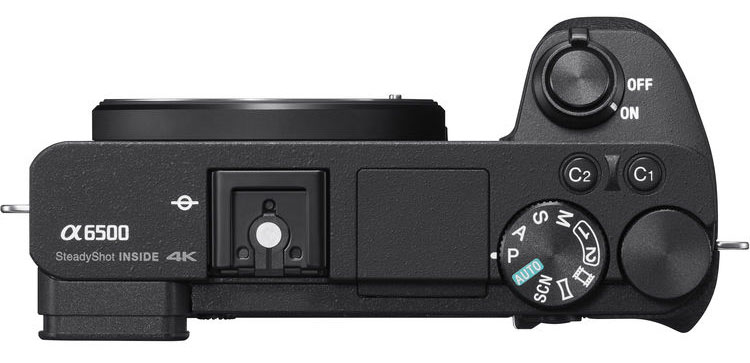
Twinned with this is the electronic viewfinder on the top right corner of the camera body. Again, the viewfinder is clean and sharp, but as a spectacles wearer, I had to remove the rubber lens cap and hold it right against my glasses to use. Even then, I had to move the camera around a bit to see some of the information in the corners of the screen. A sensor by the side of the viewfinder switches the LCD screen off and the viewfinder on when it detects your face, but I found that this was rather too easily triggered by things other than my approaching face. Brushing a hand over the sensor triggered it, blanking the LCD screen. Fortunately, this sensor can be disabled and the switching mapped to one of the three custom buttons on the camera body.
On the top of the camera is the flash hot shoe, which works with both Sony proprietary flashes and standard ones. Alongside this is a small pop-up flash. While this is nice to have in a pinch, I found that the 16-70mm zoom lens blocked the flash at anything wider than about 50mm. It might work with a smaller, pancake-style lens for casual shooting, but it's pretty much useless with the larger zoom lens.
MORE: Best DSLR Cameras From Beginner to Pro
Specs
Megapixels/Sensor:24.2/APS-C
ISO: 100- 25,600 (51,200 with Boost)
Video (Max Resolution): 3840 x 2160 (30 fps)
Shooting Speed: 11 fps
Autofocus: 425 points (phase-detection) / 169 points (contrast-detection)
Display: 2.95 inch articulating touchscreen/ 921,600 dots
Wi-Fi/GPS/NFC: Yes/No/Yes
Battery Life (CIPA): 310 shots
Size and Weight: 4.75 x 2.75 x 2.13 inches/1 pound
Good Physical Controls, But confusing menus
The a6500 puts a lot of controls onto physical buttons on the camera, which makes for quick access. On the top are two custom buttons, plus the mode and control dials. On the back are flash, menu, an AF/AEL selector, function, the directional control, and playback and delete. Some of these buttons do double duty: The delete button, for instance, acts as a third custom button during shooting, and pretty much any button can be reconfigured or reassigned if needed. This could be either useful or incredibly annoying, depending on how organized you are.
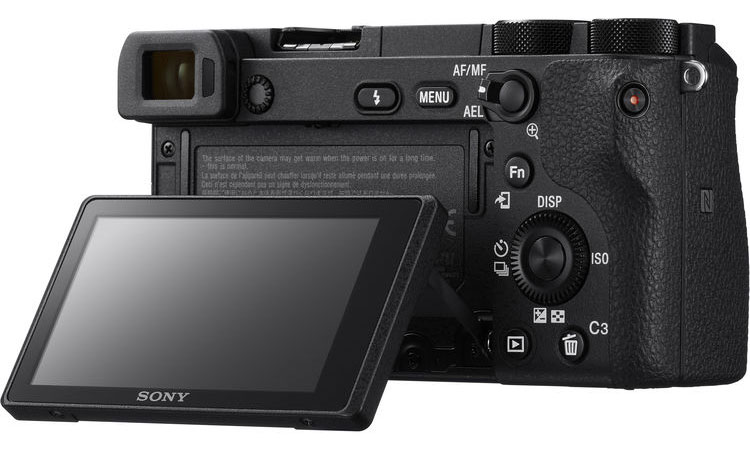
The mode and control dials fall comfortably under the thumb, so you can change modes or adjust aperture/shutter speed without moving your hand. The thumb can also reach the focus/exposure lock easily enough, but the other controls are out of reach.
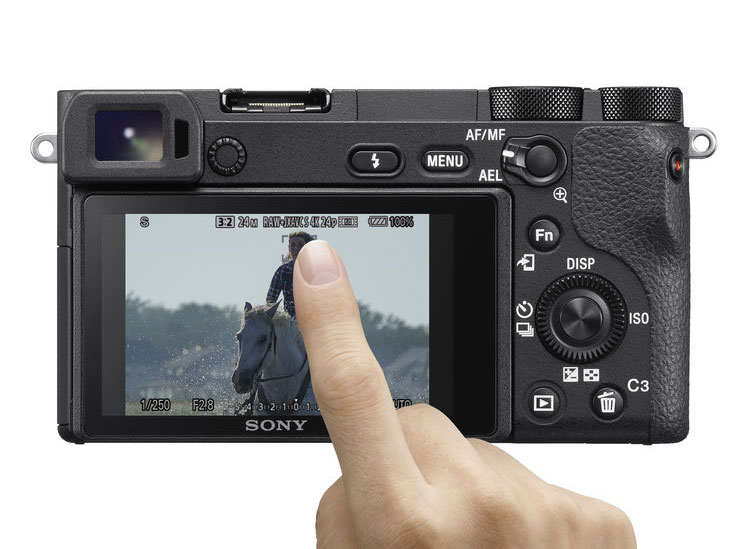
The on-screen menus are, unfortunately, a sprawling mess. As they're divided into six sections, finding an option requires a ridiculous amount of clicking and scrolling. Each of these sections is then divided into a number of pages: 14 for the two camera settings sections, nine for movies, two for wireless apps and playback, and seven for setup. That's more than 36 pages of menu settings, many of which have multiple sub-options. While we expect a complex camera like the a6500 to have lots of settings to tweak, the organization of this menu system makes finding anything a nightmare. Sony has improved this a little from the a6300, but the new menu is still difficult to use.
The addition of the touch screen does make picking on-screen options a little easier, though. You can choose where to focus the camera by tapping on the screen rather than scrolling around. It's not a particularly responsive touch screen, though; it sometimes takes a firm tap for the a6500 to notice when you have touched the screen, particularly in cold weather.
MORE: DSLR vs. Mirrorless Cameras: Which Is Better for You?
Image Quality
As the a6500 shares the same, 24-megapixel, APS-C-size image sensor as the cheaper a6300, I was not surprised to find that images shot with the newer camera were just as impressive. The images below were shot using a 16-70mm f/4 Zeiss lens that adds $898 to the cost.
Bright-Light Quality

Shooting in bright light, I saw excellent detail and sharp, clean color. Take this image of a rare white squirrel I took on Boston Common: If you zoom in, you can see plenty of detail of the animal's face and whiskers.

Switching to shutter speed priority mode, I moved onto taking pictures of the skaters on Frog Pond. Here, the fast AF of the camera was able to snap into focus quickly on the skaters zooming by, and kept locked onto them as they moved past me. For these images, I used the Auto ISO setting and a shutter speed of 1/2000. On a dull Boston winter day, this meant that the camera had to bump the ISO up a little, but the images the a6500 captured had excellent detail and clarity, even with fast-moving subjects.

Dynamic Range
Dynamic range refers to the ability of the camera to capture both highlights and shadow detail, and the a6500 performed well here, capturing both in most situations. Look at the example below, in which the camera has recorded both the highlights of the reflections on the water and the details in the rock shadow. However, you can see some noise start to creep in here because of the slightly higher ISO (2000) that the camera used. Some of the surface detail on the rock is lost because of the noise reduction.

The a6500 offers a feature called Dynamic Range Optimization. As the name suggests, this feature doesn't actually widen the dynamic range, but can help to pull out fine details by optimizing the response of the camera.
Low-Light Results
The a6500 did suffer a little when things get dark outside. It can extend the ISO to the somewhat ridiculous level of 51,200, but I found that images started to get rather noisy at ISO levels of 6,400 and above.

At its maximum, images are either extremely noisy with Noise Reduction off, or look more like paintings than photos with that setting turned on.

There are noise-reduction features on offer, such as a high ISO noise-reduction mode, but they come at the cost of some shadow detail and overall image clarity. In addition, there is a multiframe noise-reduction mode that takes several images, then combines and averages them to reduce the overall noise. This is more effective than the standard noise reduction, and it's available on all ISO settings. However, it produces a clack-clack-clack-clack-clack shutter sound and doesn't work with subjects in motion. If the camera or subject moves, it results in a blurry mess.
In addition, the a6500 offers a five-axis sensor-shift image-stabilization system, which allows the image sensor to move in five directions (it can pitch, yaw, shift horizontally and vertically, plus rotate) to compensate for camera movement. This can also combine with image stabilization built into the lens if present. I found this combination to be very effective, making images taken at slower shutter speeds of 1/30 much sharper.
MORE: Camera Recommendations for All Kinds of Photographers
Focus and Speed
The a6500 has an impressive 425 phase-detection focus points built directly into the image sensor, which allows the camera to choose where to focus all across the image frame. That's the same number as the a6300, which is not surprising, as the two cameras use the same image sensor. I found the focus of the a6500 to be equally as impressive, quickly snapping into focus objects across the frame, and easily tracking moving objects such as a dog running across a field, or a cyclist heading toward the shooter.
Continuous Shooting and AF Tracking
The a6500 excels at capturing a lot of images quickly. This is one of the major areas where it differs from the cheaper a6300. On the fastest Hi+ drive mode, I measured the speed of this camera at an impressive maximum of 11 frames per second (fps), which is the same as the a6300. Where the a6500 differs is that it was able to keep capturing images at this speed for more than 30 seconds when saving JPEG files, and about 10 seconds for RAW images. That's more than 300 images being held in buffer memory before they are written out to the SD card. The a6300 managed to keep the 11fps speed going for only about 10 seconds.
Perhaps more impressively, the a6500 can continuously focus the lens while shooting at this speed, tracking the active focus points and updating the lens position between shots. Combine this with the processing power to track a moving object, and you have a powerful combination — hen it works, that is.
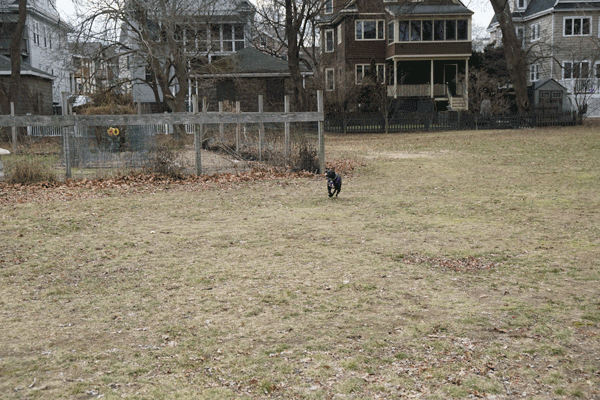
In this example (slowed down from 11 fps to about 2 fps), the camera successfully tracked my dog running across a field, keeping him in focus as he approached the camera.
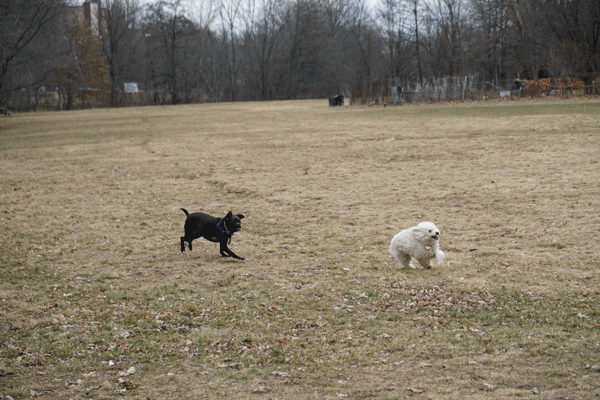
But in this example, the camera lost track of another dog, with the focus swimming as the camera tried to refocus on the animal. This was a fairly rare occurrence (and was perhaps because of the two dogs in the frame initially), but the system certainly isn't perfect, and can be confused by multiple moving objects or the movement of the camera itself.
The live preview of the image does suffer in this mode, though, becoming very jerky and difficult to see. An alternative is the Hi Drive mode, which captures 8 fps, but with a much more consistent and usable live view. Seeing as you are relying on this to move the camera as required, that's a definite plus.
Video Quality
The a6500 captures 4K video at a resolution of 3840 x 2160 pixels at 30 or 24 fps, with a maximum bit rate of 100 Mbps. It can do this bit rate only with a fast, UHS-I-certified memory cards; slower cards are restricted to 60 Mbps video. Either way, the video the camera captures is very crisp, with excellent detail and strong, clean color in bright light. Video gets a little noisier in low light, but it still holds up impressively well.
One thing to note: The placement of the video shutter on the left side of the camera is very awkward, as you can't reach it without releasing your grip on the camera. That's why there is a shake at the start and end of these sample videos; the camera moved as I tried to regain or loosen my grip before or after hitting the video shutter. However, you can remap the video shutter to another button on the a6500.
Focusing in videos was also a problem. The camera offers continuous, manual, and subject-tracking focus for video, but the continuous focus works rather poorly. If the focus point shifts, the camera takes a couple of seconds to respond. You can force it to refocus by half-pressing the shutter, but this is rather slow, with the camera usually taking a second or so to refocus, and shooting a blurry mess as it does.
If you reduce the video resolution to 1920 by 1080 HD, you can also shoot at 120 fps, which then plays back at 30 fps for a quarter-speed, slow-motion effect.
MORE: How Many Megapixels Do You Really Need?
App Add-Ons
One addition to the a6500 is support for apps that run on the camera itself. Called PlayMemories Camera Apps, these can add features to the camera, such as allowing for remote control, special effects or multiple-exposure images. Some of these apps are free, but most cost $4.99 to $9.99. They are available only from Sony's own app store. Most of these apps are rather limited, but some offer interesting features, like a touchless shutter feature that uses the viewfinder sensor to trigger the shutter.
The A6500 excels at capturing a lot of images quickly.
A free basic remote-control app called Smart Remote Embedded is already installed; it allows you to view the image preview, take photos and tweak some basic settings over the Wi-Fi connection. This works, but the images are rather slow to transfer to the smartphone after capture.
Wireless Sharing
The a6500 includes a Wi-Fi interface (albeit only on the 2.4Ghz band, not the faster and less crowded 5GHz band) that can be used to transfer images to a smartphone or computer. For smartphones, you use the PlayMemories app (available for iOS or Android) to transfer images or upload them to social media. You connect the app to the camera's Wi-Fi using a QR code, which is much easier than trying to find the camera in a sea of network names and then typing in a long security key. This feature works, but copying images is frustratingly slow.
Battery Life
Sony rates the battery life of the a6500 at 310 shots on the viewfinder, or 350 using the LCD screen with the CIPA standard. For video, Sony claims you get 105 minutes of continuous shooting either way. These figures seem rather optimistic, though, because most people spend more time composing photos and changing settings than pressing the shutter button. I found the battery life adequate, but it was running low after an average day of casually shooting a couple hundred shots, so a spare battery or two should be an essential part of your shooting kit.
The A6500 uses the NP-FW50 battery, the same model found in other A-series Sony cameras. That's a plus if you are upgrading from an older model. The battery can be charged inside the camera, or in the included battery charger. Spare batteries will cost you about $50.
Lenses
The a6500 uses Sony's own E-Mount, which provides access to a good selection of lenses, from a 16mm f2.8 wide angle right up to a long 55 to 300mm zoom lens. The selection is nowhere near as wide as the options for Nikon or Canon cameras, though, and the a6500 can't use E-mount lenses that are designed for full-frame cameras like the Sony a7. If you do want to use lenses built for other cameras, there are a good range of mount adapters available. We tested this camera with the f/4 16 to T70 mm Zeiss zoom that Sony offers for an additional $898.
Bottom Line
There is a lot to like in the Sony a6500. It's a powerful, compact camera that takes excellent images and video at impressive speeds, with snappy autofocus. The image quality is excellent, although there is some noise in low light. The video-quality shooting at 4K is excellent in daylight and pretty good in low light, although not as good as the camera's full-frame cousins.
However, the improvements over the a6300 are probably not worth it for most people. The faster processing and buffer memory means much longer bursts of fast shooting, which is a big plus for sports or nature photographers, but won't mean that much to others. The other upgrades — a few more noise-reduction options and a tweaked menu system that isn't much of an improvement — are minor. At $1,398 for the body alone, the a6500 costs more than the Canon 80D, and it doesn't have the same selection of lenses. The a6500 is a fantastic camera, but most users will be better off saving $400 and buying the Sony a6300 instead.
Photo and Video Credit: Richard Baguley
Richard Baguley has been working as a technology writer and journalist since 1993. As well as contributing to Tom's Guide, he writes for Cnet, T3, Wired and many other publications.
-
fshbyfly "the a6500 can't use E-mount lenses that are designed for full-frame cameras like the Sony a7"Reply
FYI - This statement is incorrect. All of the a6xxx camera bodies, including the a6500, can use any E mount lens (E or FE). The A mount lenses require an adapter, but FE (full-frame) lenses work just fine. I use the FE 70-200 mm F4 G OSS lens on both my a6000 and a6500 almost daily.
Overall, a good review. Thanks. -
See_Squared Good general review, but caters squarely to still photographers. Little importance was given to the 5 axis IBIS, or why this is a major thing for video shooters. As the camera shoots pretty good 4k, 12o fps in full hd, and offers a new feature for automatically creating fast or slow motion sequences in-camera, these are major differences for video shooters and were almost completely ignored in this review.Reply
But if you shoot video (especially hand-held), IBIS alone will be worth the additional $400 for a lot of people. Consider that IBIS means you can save money (potentially a lot more than the extra $400) just by NOT having to purchase only the more expensive OSS lenses for stabilization. Now you can use any lens stabilized, including legacy or much cheaper Nikon/Canon lenses with cheap adapters, and have all of it stabilized just like the more expensive A7ii family bodies with IBIS.
Is that worth an extra $400? For a lot of video shooters the answer is yes, especially when considering the other new features mentioned in this review. Is it perfect? No, but the A6500 still retains the title of the best 4k camera for the money, the same as the A6300 is still the best 4k camera for under $1,000.

